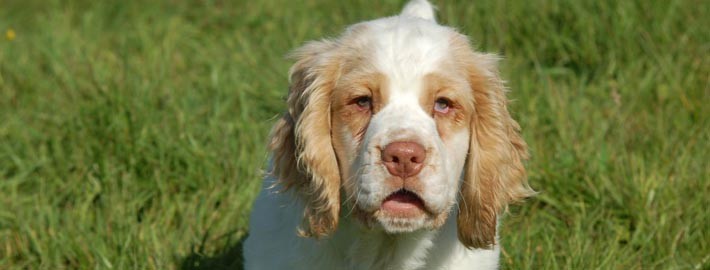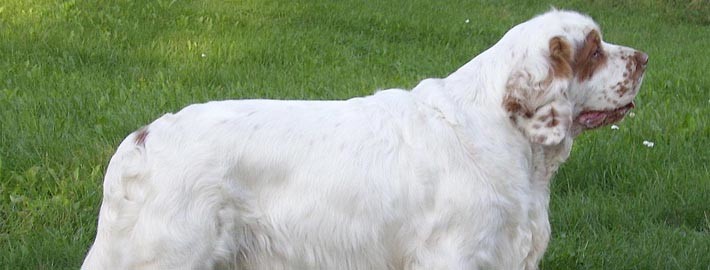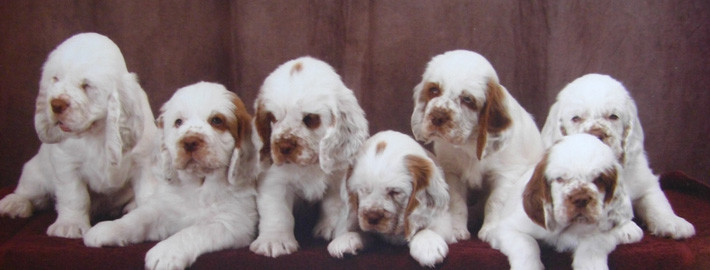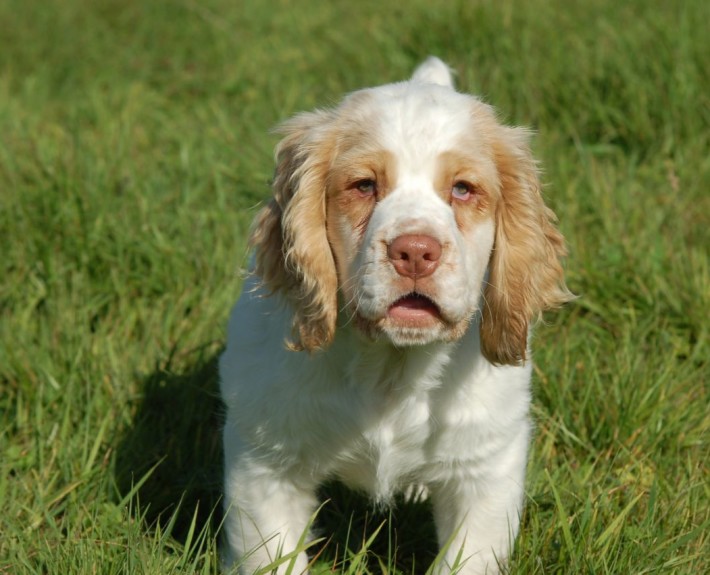What makes the Clumber Spaniel Unique?
The clumber spaniel is a long, low dog, rectangular in shape and with massive bone. This build, in combination with a deep chest, heavy brow and powerful hindquarters, enables the dog to move through thick underbrush when hunting. The coat is straight, flat, soft and dense, imparting resistance to weather. The white color helps the hunter locate the dog. The clumber tends to hunt close. It moves easily, tending to roll slightly because of its wide body and short legs. The expression is soft. Among the most low-keyed and easygoing of sporting breeds, the clumber spaniel is nonetheless a hunter at heart, ever ready for a day in the field. At home it tends to be quiet and may even need to be goaded into exercise. It is one of the few sporting breeds suitable for city life, although it will relish walks and outings. The clumber makes a good pet, especially devoted to one person.
Breed Groups
Page Contents
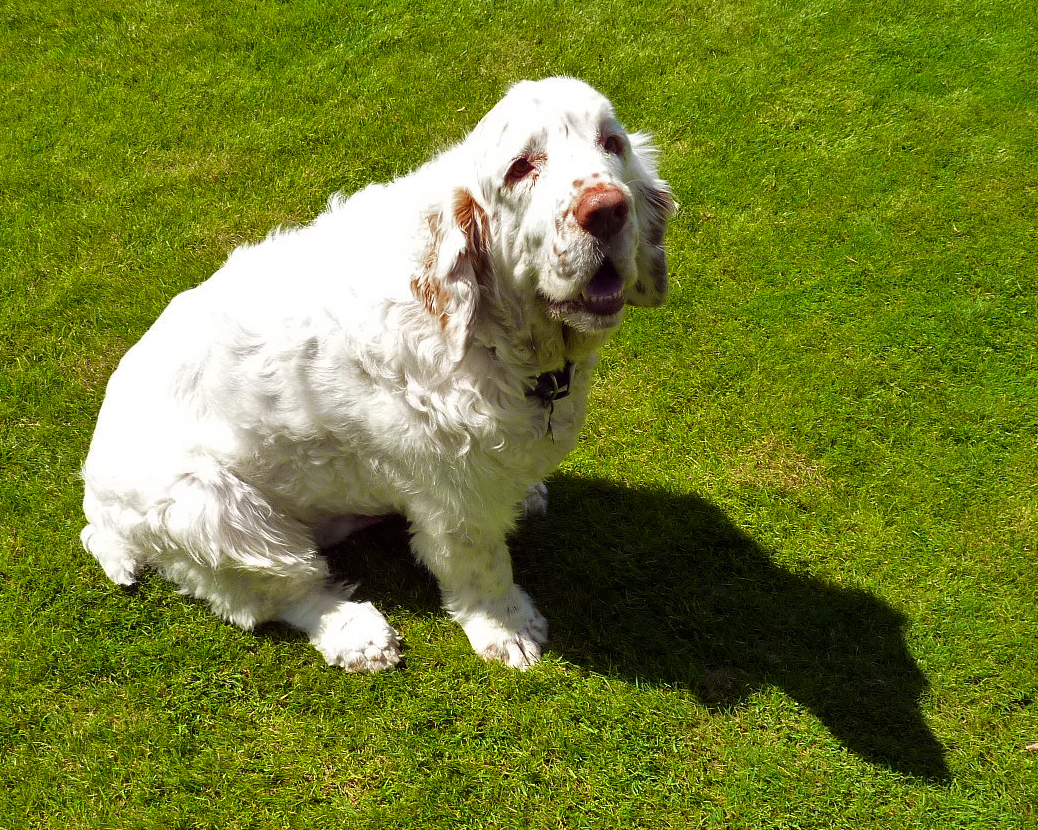
SnapShot
Is the Clumber Spaniel Right For You?
The clumber spaniel is a long, low dog, rectangular in shape and with massive bone. This build, in combination with a deep chest, heavy brow and powerful hindquarters, enables the dog to move through thick underbrush when hunting. It is one of the few sporting breeds suitable for city life, although it will relish walks and outings. The clumber makes a good pet, especially devoted to one person.
In 5 Words
- Gentle
- Loyal
- Calm
- Dignified
- Affectionate
Characteristics
Learn About the Clumber Spaniel
Description
The Clumber Spaniel is a heavy-boned, low to the ground dog with short legs. The head is massive with a broad, deep muzzle, a defined stop and a heavy brow. The large nose comes in shades of brown ranging from beige, rose and cherry. The teeth meet in a scissors bite. The wide chest is deep and the front legs are straight. The deep-set eyes are dark amber in color. The flews hang over the lower jaw. The hanging ears are triangular in shape with rounded tips, set low on the head. The neck is thick, heavy, and feathered at the throat. The feathered tail is either docked or kept natural. Note: docking tails is illegal in most parts of Europe. The feathered coat is soft to the touch, flat, dense and straight. The coat is predominantly white, with lemon or orange markings.
Short History of the Clumber Spaniel
Little is truly known about the breed’s origins, but legend has it that Duc de Noailles of France delivered his beloved spaniels to his English counterpart, the Duke of Newcastle, to save them from the horrors of the French Revolution. The dogs were then sent to the Duke’s Clumber Park estate, where they subsequently acquired their breed name. Based on paintings from that era, Clumbers haven’t changed much in the intervening two centuries: The dogs still have a somewhat reserved temperament, as well as a sensible, rather than showy, appearance. The Basset Hound and a dog known as the Alpine spaniel probably figure into their genealogy.
Interest in the breed continued through the 19th century, and Clumbers were even exhibited at an early dog show in 1859. Clumber Spaniels also became popular with the British aristocracy. Royal fans of the breed included Prince Albert and Edward VII.
In 1844, a British officer brought the first known Clumbers to North America via Halifax, Nova Scotia. There was already a studbook for the dogs by the time the American Kennel Club was founded in 1884, at which point the Clumber became one of the nine breeds first recognized by the AKC. Today, the breed ranks 131st among the dogs registered by the AKC.
Temperament
Their temperament is described as gentle, loyal and affectionate, but dignified and aloof with strangers. They can appear to be a sedate breed and enjoy curling up on the couch, eating and sleeping.
Clumber Spaniels shed at a medium pace. Clumbers tend to drool because of their very droopy flews. Clumbers have minds of their own. Puppies are especially curious and playful. The breed has a trophy mentality and the dog has an incessant need to carry something most of the time, unfortunately this can lead to health issues as they may ingest the items.
The breed has been used to hunt pheasant and partridge, in both small packs and alone. It is well-suited for work in upland hunting in dense cover,and although the Clumber is rather slow in the field compared to other spaniels, it is a quiet worker with a fine nose and good stamina. The broad muzzle of the breed allows it to retrieve a variety of game.
Caring for Your Clumber Spaniel
General Health
Because Clumber Spaniels are large boned and fast growing, they can suffer from temporary lameness from between six to twelve months of age, with this lameness subsiding when bone growth is complete. Another common condition that the breed suffers from are impacted anal sacs and the dog may require them to be emptied by a veterinarian. The final common condition that the breed has is heat sensitivity, if Clumber Spaniels are left without shade, they can become uncomfortably hot and dehydrated.
In addition, Clumbers often have difficulties conceiving and giving birth, and may require caesarian sections. Some dogs may suffer from sensitivity to anaesthesia. The most common severe health conditions in the Clumber Spaniel are entropion/ectropion eye conditions, spinal disc herniation and hip dysplasia. They have a median lifespan of around 10 years.
Grooming & Bathing
The coat needs brushing two to three times weekly, although in dirty areas he may need more frequent bathing in order to keep his coat a gleaming white. Clumbers tend to drool and, at times, snore.
Exercise & Training
The clumber enjoys a daily outing, but his exercise requirements can be met with a long walk on leash or a leisurely hike in the field.

